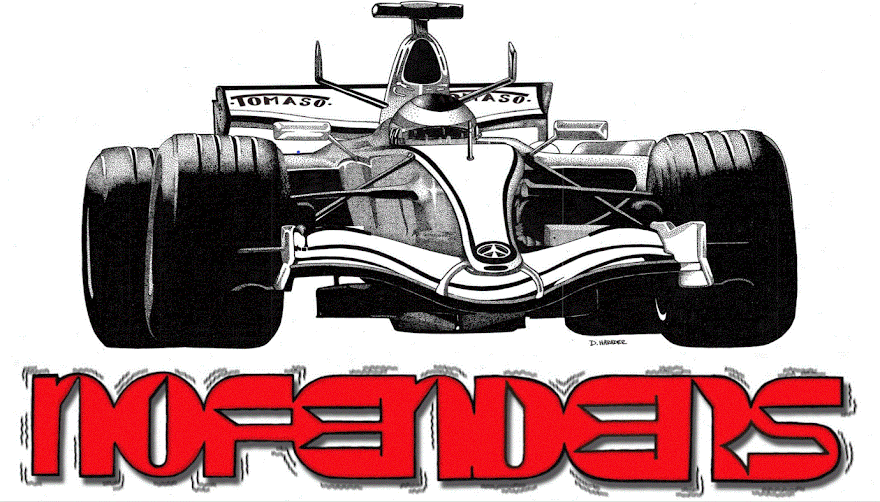After having sat dormant and neglected for four hard war years - The old lady at 16th & Georgetown was set for a renaissance thanks solely to Tomy Hulman’s decision to purchase the venerable racetrack...
1946: Racing resumes
With World War II over, and the Indianapolis Motor Speedway in the hands of the Hulman family, racing not only resumed around the globe, but at the Speedway
Dean Jackson:
My father Purvis “P.D.” Jackson
My father originally owned the Continental Radio Tube business, but during the depression he lost everything; i.e.; business, buildings & factories, etc. so he started over from scratch and began the Blue Crown Spark Plug Co. which was his first and only endeavor into sponsoring racing cars.
I used to go to time trials and the race every year with my father and I recall riding from Chicago and leaving once around 8-9PM, riding in the back seat with my father and (Blue Crown) company executive Curt Kellogg while we listened to the Joe Louis fight on the radio the year he won, while I was probably the last kid allowed to have a pit/garage pass during the late ‘40’s...
 |
| 1946 Indy 500: Mauri Rose; No. 8; Leading at 40 laps (DJP) |
Thus, with the resumption of racing at the Speedway
Ironically, the 1938 ex-Floyd Roberts winning chassis qualified on pole at the hands of Cliff Bergere, with a speed of 120.220mph. Since Lou Moore currently had no racing cars in his stable, he instead participated as Bergere’s chief mechanic, who had once again partnered with Moore
 |
| 1946 Indy 500: Mauri Rose; crashing into No. 10 Twin Coach. (“Rear axle flying above car!” DJP) |
Yet, the sensation of qualifying was Ralph Hepburn, now 50 year’s old and piloting the newly constructed Frank Kurtis roadster with the ’41 Bud Winfield developed V-8, now renamed the Novi , with the race car carrying the moniker of Novi Governor Cup, while two most unorthodox racecar’s accompanied the pole sitter.
Dean Jackson:
The No. 8 Blue Crown Spark Plug car started ninth, on the inside of row three, driven by Mauri Rose and by the first lap led by a quarter of a lap, leading for 40 laps before it was involved in an accident, when Mauri spun out on an oil slick in the North chute and there was major carnage, with an axle being thrown 30-40 feet into the air!
 |
| 1946 Indy 500: Aftermath of Rose’s crash (Car No. 10 + Car No. 8; DJP) |
On lap 41, Rose rammed the stricken chassis of Paul Russo’s #10 Fageol Twin Coaches, which had crashed against the wall some 24 laps prior, but had been left unattended on the circuit! Thus, when Rose had been forced to take evasive action upon attempting to lap another competitor, whom seems to be unknown, a massive collision occurred and Rose would be classified 23rd.
 |
| 1946 Indy 500: Tow Truck cleaning up Rose’s stricken chassis (DJP) |
Interestingly, the Fageol Twin Coach was a rather unique vehicle entered by NOTED Indy Car owner Lou Fageol, whose fortunes seemingly came from his father who built twin engine busses for a living. Hence,, the motivating factor of the Fageol Twin Coach was based on the motor coaches principles and thus, not one but two 90cid four cylinder Offenhauser midget engines were shoehorned into the radical chassis with one each in front of and behind the driver.
Meanwhile, rolling off from third place was a youthful Sam Hanks aboard another interesting creation, as the Myron Stevens 1939 chassis originally built for George Schroeder was motivated by the ex-Frank Lockhart V-16 Blackhawk Stutz supercharged engine. This sixteen cylinder Lump was the same motor propelling Lockhart’s fateful land speed record attempt on the sands of Daytona Beach
Being the first post war race, the field was comprised of an eclectic mix of pre-war vehicles and alas, the Indy 500 was not won that year by an Offy, with victory instead being obtained by George Robson aboard a Thorne Engineering, Adams/Sparks race car, as Offenhauser, Lou Moore and the Blue Crown Spark Plug Co. would have to wait a further year before their indelible grip upon the Borg Warner trophy would begin...
To continue reading, see; Blue Crown Spark Plug Specials-Part 4
(DJP: Dean Jackson Photographs)
